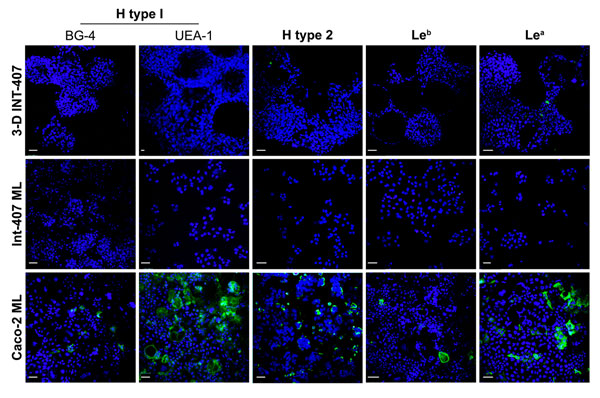Volume 19, Number 3—March 2013
Research
Lack of Norovirus Replication and Histo-Blood Group Antigen Expression in 3-Dimensional Intestinal Epithelial Cells
Figure 4

Figure 4. . . Three-dimensional (3-D) INT-407 intestinal cell aggregates do not express the histo-blood group antigens important for Norwalk virus (NV) attachment. Monolayer (ML) INT-407, 3-D INT-407 aggregates, and Caco-2 ML (positive control) were labeled with 2 different H type 1 (BG-4 and UEA-1) antibodies and with antibodies against H type 2, Leb, and Lea (green) and imaged by confocal immunofluorescence microscopy. Nuclei were counterstained with 4',6-diamidino-2-phenylindole (blue). Scale bars = 50 μm.
Page created: February 12, 2013
Page updated: February 12, 2013
Page reviewed: February 12, 2013
The conclusions, findings, and opinions expressed by authors contributing to this journal do not necessarily reflect the official position of the U.S. Department of Health and Human Services, the Public Health Service, the Centers for Disease Control and Prevention, or the authors' affiliated institutions. Use of trade names is for identification only and does not imply endorsement by any of the groups named above.